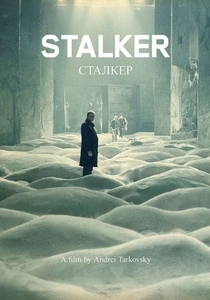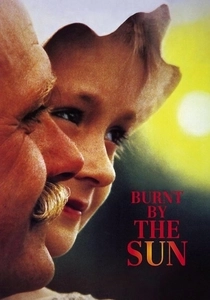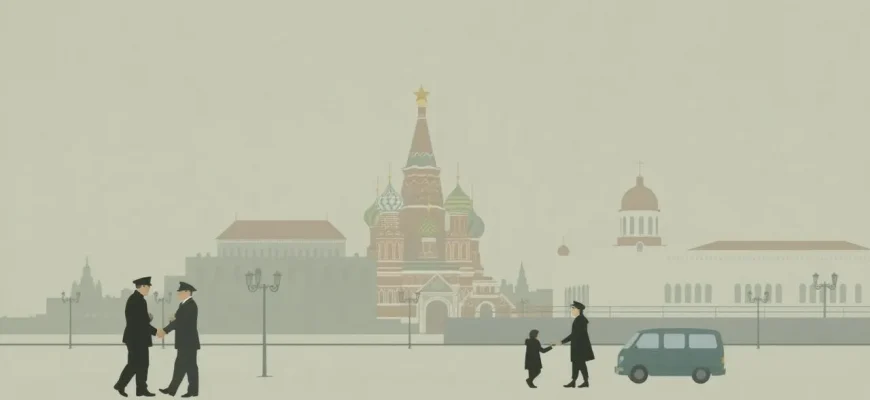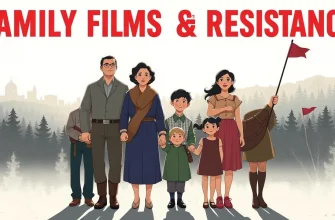The Soviet Union, with its rich history and complex socio-political landscape, has been a fertile ground for filmmakers. This collection of films offers a window into the lives, struggles, and triumphs of people under the Soviet regime. From historical dramas to poignant comedies, these films not only entertain but also educate, providing a nuanced understanding of a bygone era. Whether you're a history buff or simply love compelling storytelling, these movies are a must-watch.

Stalker (1979)
Description: A philosophical science fiction film about a guide leading two men into the mysterious "Zone" where their deepest desires can be fulfilled. It's a meditation on human nature and the search for meaning.
Fact: The film was shot in Estonia, and the Zone was created using abandoned industrial sites. The film's script was adapted from the novel "Roadside Picnic" by the Strugatsky brothers.
 Watch Now
Watch Now 
Burnt by the Sun (1994)
Description: This film captures the paranoia and fear during the Great Purge of the 1930s, focusing on a day in the life of a Red Army hero and his family. It's a poignant exploration of the personal impact of political oppression.
Fact: Nikita Mikhalkov, who directed and starred in the film, won the Best Foreign Language Film Oscar for this work. The film was also Russia's submission for the Academy Award for Best Foreign Language Film.
 Watch Now
Watch Now 
The Irony of Fate (1975)
Description: A classic Soviet comedy about a man who, due to a mix-up, ends up in Leningrad instead of Moscow, leading to a series of humorous and romantic events. It's a beloved film that reflects the uniformity of Soviet apartment blocks.
Fact: The film has become a New Year's Eve tradition in Russia, often watched by families on December
 30 Days Free
30 Days Free 
The Ascent (1977)
Description: Set during World War II, this film follows two Soviet partisans on a mission that turns into a harrowing journey of survival and moral dilemmas. It's a stark portrayal of the human spirit under extreme conditions.
Fact: Larisa Shepitko, the director, tragically died in a car accident shortly after the film's completion. The film won the Golden Bear at the Berlin International Film Festival.
 30 Days Free
30 Days Free 
Come and See (1985)
Description: A harrowing depiction of the Nazi occupation of Belarus, focusing on a young boy's transformation from innocence to the horrors of war. It's a powerful anti-war statement.
Fact: The film was shot in a documentary style, with real WWII veterans as extras, adding to its authenticity. It was also banned in several countries due to its graphic content.
 30 Days Free
30 Days Free 
Moscow Does Not Believe in Tears (1980)
Description: This film spans three decades, following three women from their youth in the 1950s to their mature lives in the 1970s, showcasing the changing social dynamics in the USSR.
Fact: It won the Academy Award for Best Foreign Language Film, making it one of the few Soviet films to achieve such recognition.
 30 Days Free
30 Days Free 
The Cranes Are Flying (1957)
Description: A love story set against the backdrop of World War II, this film explores the impact of war on personal lives, with a focus on the resilience of the human spirit.
Fact: It won the Palme d'Or at the Cannes Film Festival, making it the first Soviet film to receive this honor.
 30 Days Free
30 Days Free 
The Mirror (1975)
Description: A semi-autobiographical film by Andrei Tarkovsky, blending memories, dreams, and historical events to explore themes of time, memory, and identity in Soviet Russia.
Fact: Tarkovsky's mother, Maria Vishnyakova, appears in the film, adding a personal touch to the narrative.
 30 Days Free
30 Days Free 
The Barber of Siberia (1998)
Description: A sweeping epic that spans from the late 19th century to the early 20th, telling the story of an American woman's love affair with a Russian cadet and the broader historical context of the time.
Fact: The film was one of the most expensive Russian productions at the time, with a budget of $35 million.
 30 Days Free
30 Days Free 
The Commissar (1967)
Description: Set during the Russian Civil War, this film follows a female commissar who is forced to leave her unit to give birth, exploring themes of motherhood and duty.
Fact: The film was banned in the USSR for nearly 20 years due to its critical portrayal of the Soviet military and was only released in
 30 Days Free
30 Days Free 








